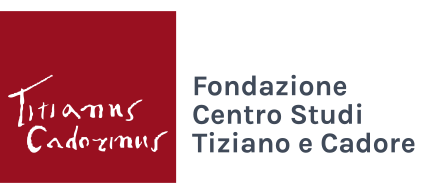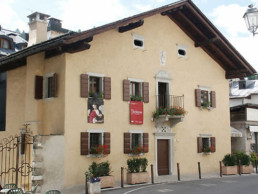Central office
The house of Tiziano Vecellio, or Titian the Orator – the title given him for having held the address with which the Cadore people hailed Doge Alvise Mocenigo after the victory of Lepanto (1571) – is a building that dates back to the middle of the 16th century and has a compact volume. It is covered by a two-layered roof and its façade is embellished by stone friezes, which include the family coat of arms.
The furnishings and frescoed studio attest to Titian’s refined character. The rooms, lined with Swiss pine or with fine coloured fabrics, were heated by fireplaces or majolica stoves. The valuable objects included at least three canvases by Titian, old books and the emblem of St. Mark’s Knight, bestowed by the doge to the owner of the house.
Already in 1625, Titian’s heirs divided the property between them and thus everything mentioned above has now been lost. The finest room is the study, where the vaults are frescoed with allegories and grotesques that attest to Titian’s receptiveness to a Renaissance all’antica style. The beautifully worked cornices in Castellavazzo stone add a further decorative embellishment to the room.
The completely restored House of Titian belongs to the Magnifica Comunità di Cadore, which in 2003 granted it to the Fondazione Centro Studi Tiziano e Cadore to serve as a seat of operations.
Tiziano Vecellio or Titian the Orator
Titian Vecellio the Orator (1538-1612), cousin to the more famous painter by the same name and part of the collateral branch of the family, was both a a notary renowned for his ability and eloquence, as well as a timber trader. He held important roles in the government of his homeland: in 1564, for example, he was appointed Chancellor of the Magnifica Comunità and was often sent to Venice as an Ambassador to represent the interests of Pieve and the Cadore area.His importance was confirmed and officially recognized on January 20th, 1577 when doge Sebastiano Venier honoured him with the title of St. Mark’s knight.It is known that he was on good terms with his cousin painter, of whom at least three paintings in his own house, now seat of the offices of the Fondazione Centro Studi Tiziano e Cadore, as attested to by the inventory drawn up of his patrimony in 1635.

